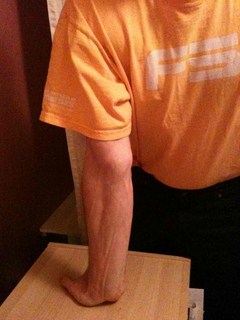Shy Drager Syndrome – Symptoms, Prognosis, Causes, Diagnosis, Treatment
What is Shy Drager Syndrome?
Shy Drager Syndrome, which is known as multiple system atrophy, is a terminal phase of a neurological disorder which occurs rarely. It is a progressive disorder that affects the Central Autonomic Nervous System which kicks off during adulthood and worsens slowly. It also affects the person’s basal ganglia and brainstem. Basically it is the result of the autonomic nervous system’s failure to control the function of the body. It damages the person’s nerves which controls the involuntary function like heartbeat, blood pressure, breathing, and digestion. It is quite similar to the Parkinson’s disease since the persons with this syndrome manifest Parkinsonism like symptoms, which may be described further in this article. The main difference from Parkinson’s disease from this syndrome is that the damage in the person’s body is extensive when a person is diagnosed with this kind of syndrome.
Symptoms and Characteristics
Persons who have this syndrome may experience the following symptoms, signs and characteristics:
- Weakness of the muscles
- Ache in the neck
- Constipation
- Diarrhea
- Loss of libido
- Urinary incontinence or Inable to control bladder or bowel
- Dizziness
- Fatigue
- Dry skin
- Impotence
- Impairment of the temperature regulatory system
- Visual problems
- Slurred speech
- Poor balance
- Stiffness
- Movement is slow
- Facial expression is lost
- Dementia
- Bradykinesia
- Akinesia
- Rigidity
- Trouble swallowing
- Reduce ability to sweat
- Gasping
- Sleep apnea periods
- Abnormal posture
- Confusion
- Respiratory failure
- Lightheadedness
- Tremors (pill rolling tremors)
- Difficulty in walking
- Dementia
- Depression
- Shuffling
- Myalgia
- Mask appearance on the persons face
- Unable to close the mouth
- Frequent falling
- Mild mental functioning decline
- Nausea
- Monotone
- Slow speaking
- Voice is on low volume
- Orthostatic hypotension
Causes and Risk Factors
The exact causative agent or cause why this syndrome occurs is still unknown. However, recent studies show that it occurs on adulthood stage at around 50 years old and above. Also theories suggest that it may be related to the protein over production which is found in the person’s brain. While other theories suggest that it is primarily due to the degeneration of the nerve cell groups which is found in the person’s spinal column. Further more studies are conducted in determining the reason behind the said occurrences. That at risk for encountering or experiencing this syndrome falls to the ages in the middle to older persons. Aside from the age, the male gender is the one of greater risk to experiencing this syndrome. Rest assured that this syndrome is not of genetic cause and thus it can’t be inherited from one generation to the next.
Shy drager syndrome diagnosis:
In diagnosing the persons with Shy Drager Syndrome, physicians, who are either in the neurology or internal medicine experts, would require examinations such as:
- Medical history examination
- Physical examination
- Eye examination
- Neuromuscular examination
- Vital signs such as pulse and blood pressure is an important assessment
- Electroencephalogram examination
- MRI examination of the person’s head
- Barium Swallow examination
- Sleep studies examination
- CT scan examination
- Plasma norepinephrine level examination
- Blood examination
- Urine examination
Treatment
There is no known cure for this syndrome and the treatments which are prescribing to persons who are diagnosed with this syndrome are medications which will only control the symptoms that the person manifests. These kinds of medications that may be prescribed are as follows:
- Beta blockers such as propranolol which treats low blood pressure
- Fludrocortisones which treats low blood pressure
- MAOI which treats low blood pressure
- Vasoconstrictors which treats low blood pressure
- Vasopressin which treats low blood pressure
- Medications to treat spasms of the bladder such as oxybutynin
- Sildenafil which is a treatment for dysfunction of the male’s erectile
- Corticosteroids such as prednisone
- Immuno globulins which enhances the immune system
Aside from the medication, which is a form of dependent therapy, the persons with this syndrome are encouraged to follow independent therapy such as:
- Eating small and frequent meals and those which are easier to swallow
- Drinking caffeinated beverages every after meals
- Avoiding alcoholic beverages
- Moderate exercises
- Increasing fluid and salt to increase blood pressure
- Getting up slowly to avoid orthostatic hypotension
- Wearing elastic abdominal binders and support stockings
- Encouraging diet which are high in fiber and intake of fiber supplements
Aside from the ones that were mention, it is also advisable for the patient to undergo therapies such as:
- Speech therapies
- Tube feeding therapies for swallowing problems
- Intermittent catheterization therapy for problems with the urination
- Joining a support group therapy
- Implantation of the penile for treatment of impotence
- Breathing support therapy such as mechanical ventilation or oxygen therapy
Prognosis & Life Expectancy
The persons who are diagnosed with Shy Drager Syndrome have a poor outcome, hence a poor prognosis. Their physical functions as well as mental capabilities is loss in the long run and will eventually get even worse than before the disease started. There is a possibility of early death. The life expectancy with persons having Shy Drager Syndrome falls from the time and day she was diagnosed is from 7 up to 9 years.
Complications
The complications that are associated with these syndromes are as follows:
- Injuries that are result from fainting or falling
- Side effects of the medications such as hallucination or dizziness and the like
- Difficulty in performance of the ADLs or activity of daily living
- The loss of the ability to care or work which is seen progressively
Prevention
Since the cause of why Shy Drager Syndrome exists is still unknown, there are no known ways to prevent the occurrences of this kind of syndrome.






